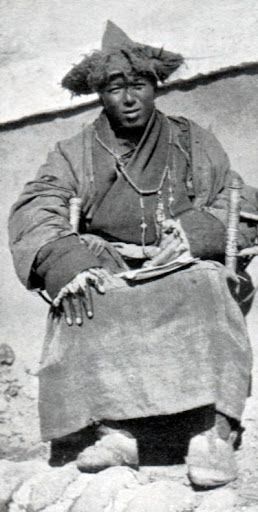1930s
Kham
ཁམས་

Meanwhile, in the Kham region, both Evangelical and Catholic missionaries employed creative new strategies to take the gospel to the Tibetan people.
At the Latsa Pass in northern Yunnan Province, Swiss Catholic missionaries from the Grand St. Bernard Order commenced work among the Kham Tibetans. The strategy of the St. Bernard monks "was to minister to all in need who traveled over the high mountain trails in trade and commerce. Their most valuable helpers were huge St. Bernard dogs—half Swiss and half Tibetan." The dogs were trained to rescue people trapped in avalanches. This unique form of ministry was greatly appreciated by the local people, many of whom owed their lives to the missionaries and their four-legged helpers.
At remote Batang, the Evangelical work had struggled to survive after the murder of Albert Shelton in 1922. Before Russell and Gertrude Morse left the area, they had the joy of seeing a Tibetan pilgrim come to faith in Jesus Christ. The man had been guilt-stricken since his youth for having murdered a man, and had visited many sacred Buddhist sites in Tibet and India in a bid to find peace for his troubled soul. The pilgrim was attracted to the Christians, and followed them around as they shared the gospel. After he was thoroughly converted and surrendered his life to Jesus, the missionaries remarked:
"He proclaimed the one God and His Son, Jesus Christ, among the Tibetans of Batang as he met them personally. He even learned the hymns and their tunes. The precious seed of the gospel found fertile soil in his heart. He not only believed, but vowed to preach about the truth of Christ thereafter. He witnessed on the streets of Batang with other Tibetans about this Truth."
© This article is an extract from Paul Hattaway's book ‘Tibet: The Roof of the World’. You can order this or any of The China Chronicles books and e-books from our online bookstore.
1. Covell, The Liberating Gospel in China, p. 51.
2. Morse, The Dogs May Bark, p. 93.
3. Stauffer, The Christian Occupation of China, p. 278.





